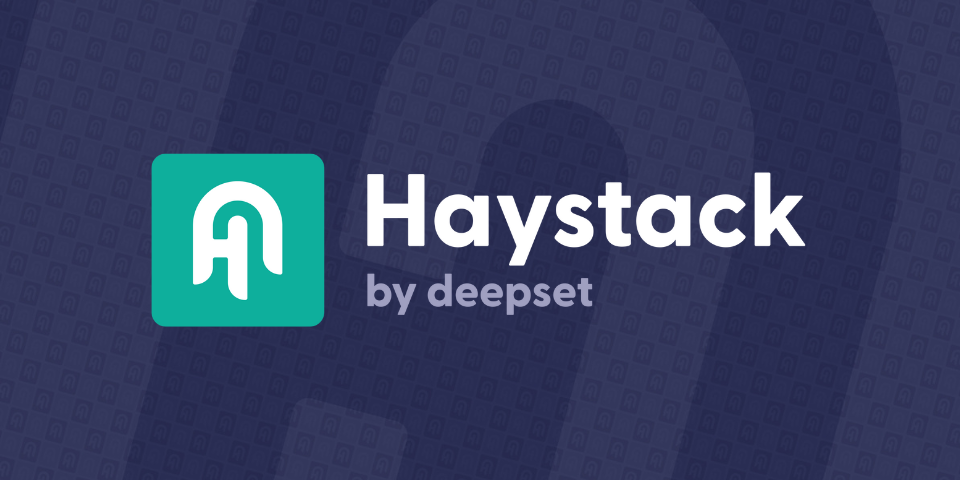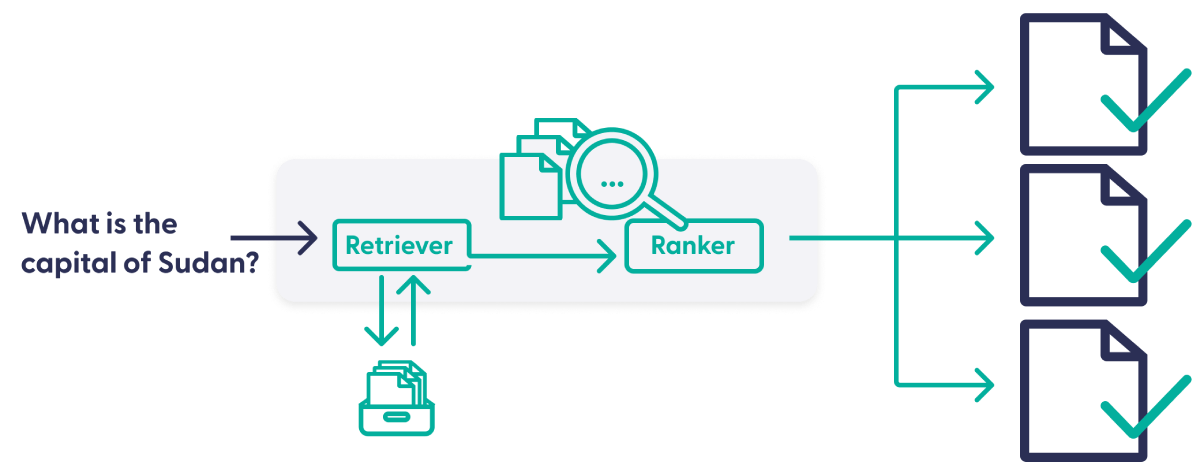🔍 Haystack

Haystack (Code) is an open-source search framework that streamlines the development of search systems.
Developed by the team at Deepset, Haystack provides a modular and extensible architecture for building end-to-end search pipelines. The framework is designed to handle a variety of tasks, including document retrieval, passage retrieval, and document/question answering.
Enabling Semantic Search
Haystack helps you ask questions in natural language and find granular answers in your documents using the latest QA & LLM models.

Perform semantic search and retrieve ranked documents according to meaning, not just keywords!

Make use of and compare latest pre-trained transformer based language models like OpenAI’s GPT-3, BERT, RoBERTa, DPR and more

🌠 Features
- Modular Design: enabling developers to customize components such as document stores, retrievers, readers, and pipelines to meet specific needs.
- Separate database: Developers can choose from options like Elasticsearch and SQLite.
- Efficient Narrowing: Cut down the search space by selecting relevant documents. Supports options like
ElasticsearchRetrieverandTfidfRetriever. - Information Extraction: easily pull out relevant information from retrieved documents. Supports integration with NLP libraries like
FARMReaderandTransformersReader. - End to End Search System: Haystack's modular pipeline comes together to combine document store, retriever, and reader to create an end-to-end search system. All your query execution and information retrieval in one system.
- Distributed: Haystack does distributed computing and indexing, allowing Haystack to scale effortlessly for both small-scale and enterprise-level search systems.

🛠 Use Cases
You can use Haystack for a lot of things, but here are just a few
Enterprise Search
- Haystack is well-suited for building powerful enterprise search engines.
- Its scalability and modular design allow organizations to tailor the search system to their specific requirements, whether it's searching through documents, databases, or other knowledge repositories.
Question Answering Systems
- Leveraging Haystack's question-answering capabilities, developers can build systems capable of understanding and responding to natural language queries.
- This functionality is particularly valuable in applications like chatbots and virtual assistants.
Information Retrieval for Research
- Researchers can harness Haystack to create efficient information retrieval systems for mining insights from vast amounts of scholarly articles, research papers, and other textual data.
👟 Getting Started with Haystack
Getting started with Haystack is pretty easy, the documentation is excellent, and the installation instructions are easy to follow.
Below is a simplified guide to give you a glimpse of the process:
If you'd rather read about it here, read on!
Step 1: Install Haystack
Use pip to install Haystack in your Python environment.
pip install farm-haystackStep 2: Set Up Document Store
Configure a document store based on your requirements, whether it's Elasticsearch, SQLite, or another supported option.
Here's a guide to getting started with ElasticSearch:

pip install elasticsearchStep 3: Define Retriever and Reader
Choose and configure a retriever (e.g., ElasticsearchRetriever) and a reader (e.g., FARMReader) based on your use case.
Step 4: Build and Run Pipeline:
Create a pipeline by combining the document store, retriever, and reader. Run queries to retrieve relevant information.
To use Haystack, you can follow the code example below. Make sure to explore the GitHub repository and refer to the official documentation for more details.
from haystack import Finder
finder = Finder(reader, retriever)
prediction = finder.get_answers(question="What is Haystack?", top_k_retriever=10, top_k_reader=5)
To use Haystack, you can follow the code example. Make sure to explore the [GitHub repository](https://github.com/deepset-ai/haystack) and refer to the [official documentation](https://haystack.deepset.ai/) for more details.
Conclusion
In the era of information overload, having powerful and flexible search systems is essential.
Haystack, with its modular architecture, scalability, and integration capabilities, stands out as a valuable tool for developers and researchers alike.
Whether you are building enterprise search engines, question answering systems, or information retrieval tools, Haystack empowers you to unlock the full potential of your data.
Explore Haystack, experiment with its features, and embark on a journey of creating intelligent search systems that meet the demands of the modern information landscape. The open-source community and documentation are there to support you on this exciting endeavor.
Happy searching!

